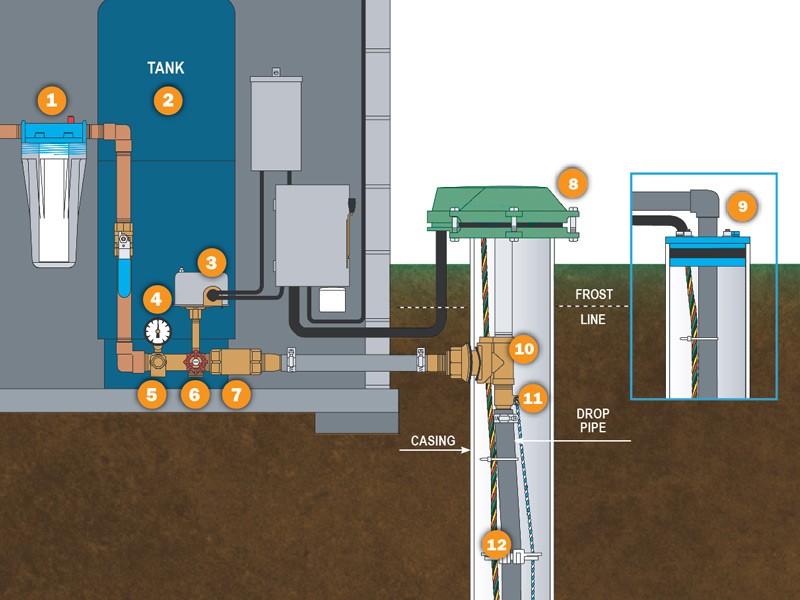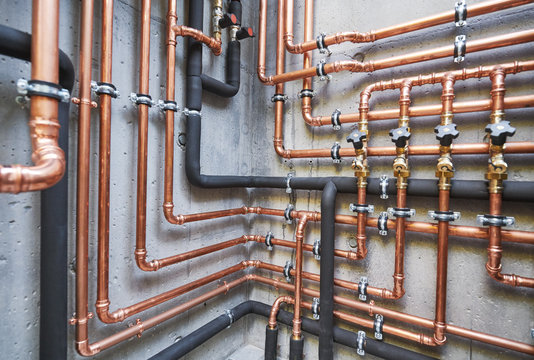The Core Elements of Your House's Plumbing System
The Core Elements of Your House's Plumbing System
Blog Article
Every person will have their private way of thinking with regards to The Inner Workings of Your Home's Plumbing.

Understanding how your home's pipes system functions is crucial for every single home owner. From providing tidy water for drinking, cooking, and bathing to securely removing wastewater, a well-maintained plumbing system is crucial for your family members's wellness and convenience. In this extensive overview, we'll discover the detailed network that composes your home's pipes and offer tips on maintenance, upgrades, and taking care of usual issues.
Introduction
Your home's pipes system is greater than just a network of pipelines; it's an intricate system that guarantees you have access to clean water and reliable wastewater removal. Recognizing its parts and exactly how they work together can help you protect against pricey fixings and make sure whatever runs smoothly.
Standard Parts of a Plumbing System
Pipelines and Tubing
At the heart of your plumbing system are the pipelines and tubing that lug water throughout your home. These can be made of numerous products such as copper, PVC, or PEX, each with its advantages in regards to durability and cost-effectiveness.
Fixtures: Sinks, Toilets, Showers, and so on.
Components like sinks, bathrooms, showers, and bathtubs are where water is used in your house. Comprehending just how these fixtures link to the pipes system assists in detecting troubles and preparing upgrades.
Valves and Shut-off Points
Valves regulate the circulation of water in your plumbing system. Shut-off valves are critical during emergencies or when you need to make repair services, permitting you to separate parts of the system without interrupting water circulation to the entire residence.
Supply Of Water System
Key Water Line
The main water line connects your home to the metropolitan water supply or an exclusive well. It's where water enters your home and is dispersed to various components.
Water Meter and Stress Regulator
The water meter actions your water usage, while a pressure regulator makes certain that water streams at a secure stress throughout your home's plumbing system, preventing damages to pipelines and components.
Cold Water vs. Warm water Lines
Recognizing the difference between cold water lines, which supply water directly from the primary, and hot water lines, which bring warmed water from the hot water heater, assists in fixing and planning for upgrades.
Drain System
Drain Pipeline and Traps
Drain pipelines lug wastewater far from sinks, showers, and commodes to the sewer or septic tank. Traps stop sewage system gases from entering your home and also trap debris that could trigger blockages.
Air flow Pipes
Air flow pipes enable air into the water drainage system, preventing suction that can slow drain and create traps to empty. Correct ventilation is important for preserving the honesty of your plumbing system.
Significance of Correct Drain
Making sure proper drain prevents back-ups and water damage. On a regular basis cleansing drains and keeping traps can stop costly repair services and expand the life of your plumbing system.
Water Furnace
Kinds Of Hot Water Heater
Water heaters can be tankless or traditional tank-style. Tankless heating systems warm water as needed, while storage tanks store warmed water for instant use.
How Water Heaters Attach to the Plumbing System
Understanding how water heaters attach to both the cold water supply and hot water distribution lines aids in detecting problems like insufficient warm water or leaks.
Upkeep Tips for Water Heaters
Routinely purging your hot water heater to eliminate debris, inspecting the temperature settings, and checking for leaks can prolong its lifespan and enhance energy effectiveness.
Typical Plumbing Problems
Leaks and Their Reasons
Leakages can occur as a result of maturing pipes, loose fittings, or high water stress. Dealing with leakages quickly prevents water damages and mold growth.
Blockages and Blockages
Obstructions in drains and toilets are commonly triggered by purging non-flushable items or an accumulation of grease and hair. Making use of drain displays and being mindful of what drops your drains can prevent blockages.
Indicators of Plumbing Troubles to Watch For
Low tide pressure, slow-moving drains pipes, foul odors, or uncommonly high water costs are indications of possible plumbing troubles that ought to be resolved quickly.
Pipes Upkeep Tips
Regular Examinations and Checks
Set up annual pipes inspections to capture problems early. Seek signs of leakages, corrosion, or mineral accumulation in taps and showerheads.
Do It Yourself Maintenance Tasks
Basic jobs like cleaning tap aerators, looking for toilet leakages making use of color tablets, or protecting revealed pipes in chilly environments can prevent major plumbing concerns.
When to Call a Professional Plumbing Technician
Know when a pipes issue needs expert expertise. Attempting complicated fixings without proper understanding can cause even more damages and greater repair expenses.
Updating Your Pipes System
Factors for Upgrading
Upgrading to water-efficient fixtures or changing old pipes can boost water top quality, lower water costs, and boost the worth of your home.
Modern Plumbing Technologies and Their Benefits
Discover modern technologies like clever leakage detectors, water-saving bathrooms, and energy-efficient water heaters that can save money and reduce ecological effect.
Cost Considerations and ROI
Calculate the ahead of time prices versus long-term savings when considering plumbing upgrades. Numerous upgrades pay for themselves with decreased utility expenses and fewer repair services.
Ecological Impact and Conservation
Water-Saving Fixtures and Appliances
Installing low-flow faucets, showerheads, and commodes can dramatically lower water use without giving up efficiency.
Tips for Minimizing Water Use
Easy practices like dealing with leaks without delay, taking shorter showers, and running full lots of laundry and dishes can save water and reduced your energy bills.
Eco-Friendly Pipes Options
Think about sustainable pipes materials like bamboo for floor covering, which is durable and environment-friendly, or recycled glass for countertops.
Emergency Readiness
Actions to Take During a Pipes Emergency
Know where your shut-off shutoffs are located and just how to turn off the water in case of a ruptured pipe or significant leak.
Value of Having Emergency Calls Useful
Keep call info for neighborhood plumbing technicians or emergency services easily offered for quick reaction throughout a pipes situation.
DIY Emergency Fixes (When Suitable).
Short-lived fixes like making use of duct tape to patch a leaking pipeline or positioning a container under a trickling tap can minimize damage up until an expert plumbing professional gets here.
Conclusion.
Understanding the composition of your home's plumbing system equips you to preserve it efficiently, saving time and money on repairs. By complying with routine maintenance routines and remaining educated regarding contemporary plumbing technologies, you can guarantee your pipes system runs successfully for many years to come.
Exploring Your Homes Plumbing Anatomy
Water Supply System
Main Water Line: This is where water enters your home from the municipal supply or a private well.
Water Meter: Typically located near where the main water line enters the property, it measures the amount of water used.
Shutoff Valve: It s crucial to know where this is in case of emergencies. It allows you to turn off the water supply to the entire house.
Pipes and Fittings: These distribute water throughout your home. Materials can include copper, PVC, or PEX.
Drain-Waste-Vent (DWV) System
Drains: Located in sinks, showers, and tubs, these carry wastewater away.
Traps: U-shaped pipes under sinks that hold standing water, blocking sewer gases from entering the home.
Vents: Pipes that lead from the DWV system to the outside, preventing vacuum formation and allowing gases to escape.
Sewer Line: Carries all wastewater from the home to the municipal sewer system or a septic tank.
Fixtures and Appliances
Sinks, Toilets, and Showers
Dishwashers and Washing Machines
Water Heaters
Maintenance Tips
Regularly check for leaks in exposed pipes and around fixtures.
Inspect the water heater annually for signs of wear.
Clean drains and traps to prevent clogs and odors.
Know how to shut off water to individual fixtures.
When to Call a Professional
Major leaks or burst pipes
Installation of new pipes or fixtures
Septic tank issues
Remodeling projects that involve plumbing changes
Conclusion
Understanding the anatomy of your home's plumbing is key to maintaining a functional and efficient system. Regular checks and knowing when to call in the experts can save you time, money, and stress.
https://www.mavyn.com/blog/exploring-your-homes-plumbing-anatomy

Exploring Your Homes Plumbing Anatomy
Water Supply System
Drain-Waste-Vent (DWV) System
Fixtures and Appliances
Maintenance Tips
When to Call a Professional
Conclusion
Understanding the anatomy of your home's plumbing is key to maintaining a functional and efficient system. Regular checks and knowing when to call in the experts can save you time, money, and stress.
https://www.mavyn.com/blog/exploring-your-homes-plumbing-anatomy
We hope you enjoyed reading our article on Exploring Your Homes Plumbing Anatomy. Thanks for finding the time to browse our piece. Those who appreciated our page please remember to share it. We thank you for reading our article about Exploring Your Homes Plumbing Anatomy.
Booking Report this page